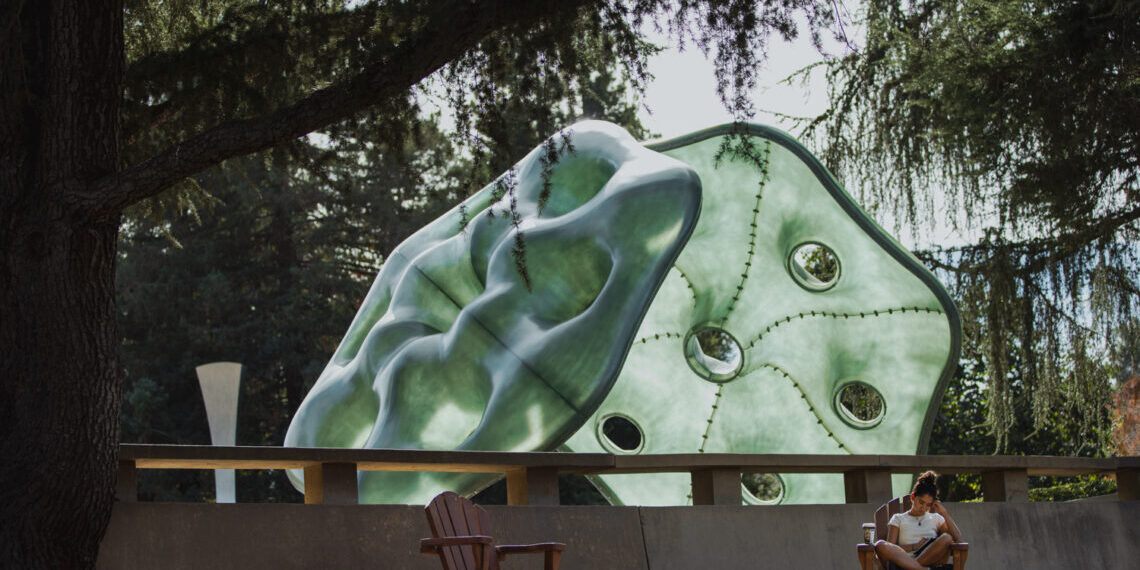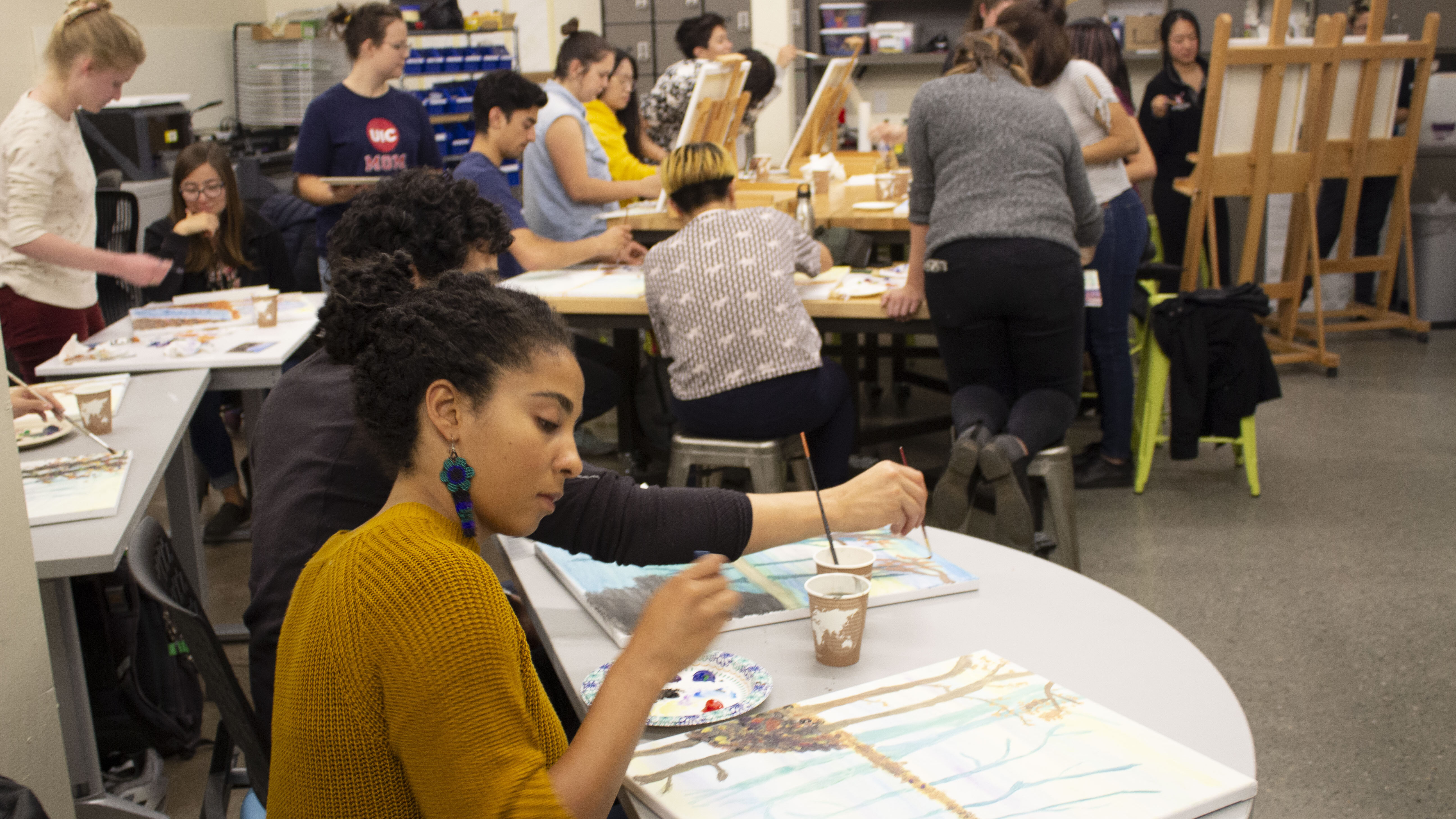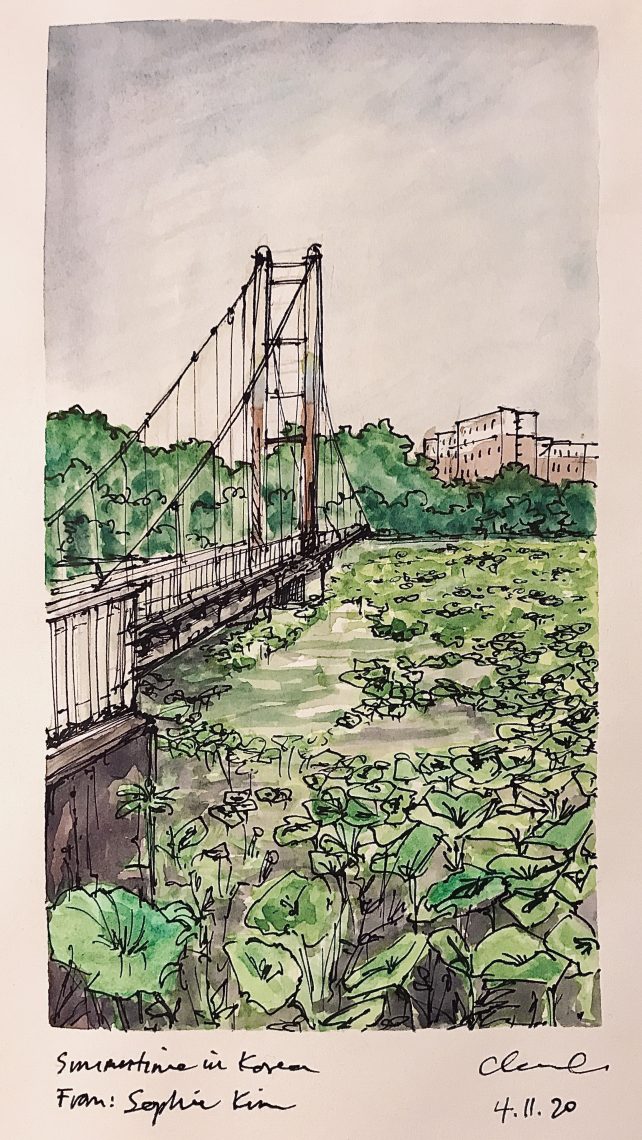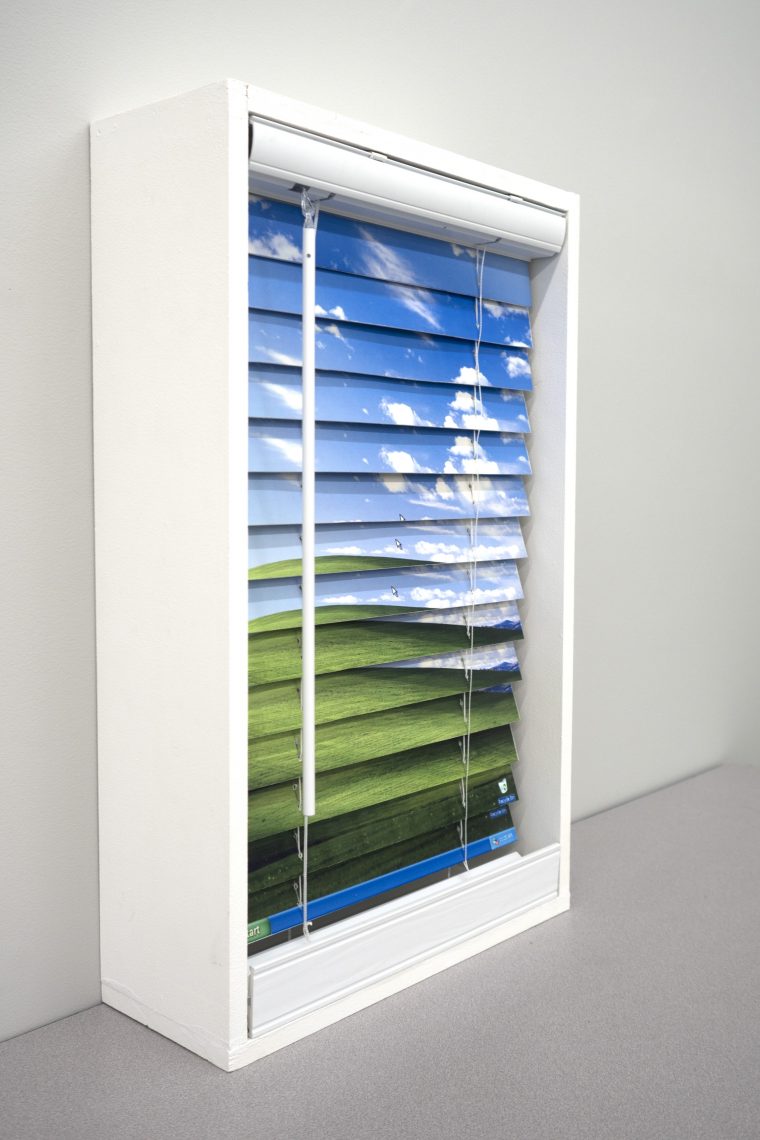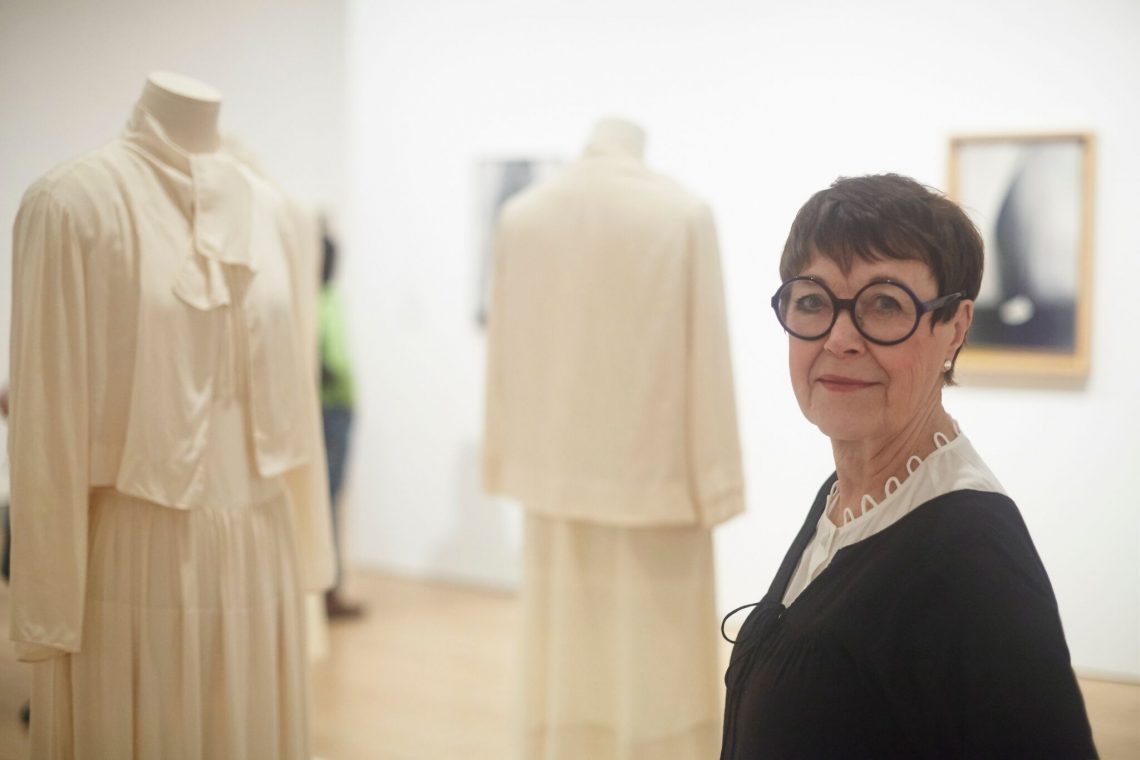 Wanda Corn.
Wanda Corn.
Pioneering Stanford professor emerita in art history continues to break new ground
The three years of research Wanda Corn conducted to produce her exhibition and book, "Georgia O’Keeffe: Living Modern," was underwritten by an Andrew W. Mellon Emeritus Fellowship administered by Stanford’s Department of Art and Art History.
Wanda Corn, who has been a pioneer in the art world for more than 30 years, isn’t slowing down. The renowned art historian and former Stanford educator has a new project, this one the artist Georgia O’Keeffe.
Corn’s ties to Stanford are long. When she joined Stanford in 1981, it was a momentous occasion for the university and for the field of art history. She was Stanford’s first appointment in the history of American art. A specialist in late 19th- and early 20th-century art, she was also one of the first academics to integrate photography and California artists into the history of American art curriculum.
Eight years into her tenure at Stanford, she became the first female chair of the Department of Art and the acting director of the Stanford Museum. From 1992 to 1995, she was the Anthony P. Meier Family Professor and Director of the Stanford Humanities Center.
When John Hennessy became president in 2000, and John Etchemendy became Provost, Corn shared a vision with them of creating an arts neighborhood by relocating the Art Department, library and its collections within the vicinity of the museum. She wrote something like a white paper imaging an arts zone that would be central to the academic life of the university, and her vision proved prophetic when the arts district began to take shape, first with the Bing Concert Hall, then the Anderson Collection and finally the McMurtry Building for the Department of Art and Art History.
Today Corn and her husband, Joe Corn, a retired senior lecturer from Stanford’s Department of History, continue to be active as faculty leaders of Stanford Travel/Study programs. And as the Robert and Ruth Halperin Professor in Art History, Emerita, Wanda Corn continues to influence and shape the field of art history, but she is doing it outside of the classroom.
In recognition of her productivity, the College Art Association, the national professional association for artists and art historians, named her the 2014 Distinguished Scholar and dedicated a session at its annual conference to her scholarship. Four of the five speakers were Stanford students and colleagues.
Her latest project is an exhibition at the Brooklyn Museum titled Georgia O’Keeffe: Living Modern, through July 23.
Research for the project, which includes an accompanying book, was made possible when Stanford nominated her for a Mellon Emeritus Fellowship, supported by a recommendation from Etchemendy. The Mellon fellowships are granted to faculty who, although officially retired, remain active and productive contributors to their fields.
In Etchemendy’s recommendation letter in 2011, he stated that Corn’s research proposal would contribute substantially to humanistic scholarship. He wrote, “[Wanda Corn] takes research on modern art in a significant new direction, expanding the object of study to include not only conventionally defined art works but also aesthetic quotidian components of the artist’s life. Her proposal ‘Georgia O’Keeffe: The Lived Aesthetic’ will use approaches and methodologies she first developed in her work on Gertrude Stein.”
The resulting exhibition is indeed groundbreaking, as it is the first installation dedicated to an artist’s clothes and domestic environment in the context of their art. “I think we are making museological history with this show,” said Corn. “The multimedia content and the elegant installation are getting enormous attention along with the fact that this approach produces an O’Keeffe we did not know. We have reinvigorated and reestablished her place in cultural history.”
The audience for the exhibition includes not only art lovers but also fabric and thread enthusiasts, and people interested in personal styles of dress and in artists who created a public persona through media and photography.
Teaching and bucket list
“I always taught the paintings of Georgia O’Keeffe in my Stanford course on modern art in Paris and New York,” said Corn. “An alum who visited the exhibition in Brooklyn recently wrote to remind me about the lecture I gave the day O’Keeffe died in 1986. The class was held in Annenberg Auditorium and I put together a slide show of her work to end my lecture as a memorial to the artist.”
Corn continues to work with and engage with former students and actively promotes those who have gone on to have art history careers in universities and museums. In the last six years, she has collaborated with former graduate students on two major projects.
Annelise Madsen, PhD ’10, today the Gilda and Henry Buchbinder Assistant Curator of American Art at the Art Institute of Chicago, contributed essays to Corn’s book Women Building History: Public Art at the 1893 Columbian Exposition published in 2011.
Tirza Latimer, PhD ’03, associate professor and chair of visual and critical studies at California Collage of the Arts, co-curated and co-authored Corn’s exhibition and book Seeing Gertrude Stein: Five Stories. Latimer was also a guest speaker at one of the Brooklyn Museum programs associated with the O’Keeffe exhibition.
Carolyn Kastner, PhD ’99, the curator at the Georgia O’Keeffe Museum, worked closely with Corn during the initial stages of cataloging and studying the artist’s wardrobe.
“When I decided to retire in 2008, I was torn between my love of teaching and my personal bucket list of art history projects that I wanted to complete while I still had my wits about me,” said Corn. “My bucket list included three books and exhibitions in the works that I knew needed full-time attention to bring to fruition.”
The first of Corn’s projects, Gertrude Stein: Five Stories, was completed in 2011. It originated at the Contemporary Jewish Museum in San Francisco and went on to the National Portrait Gallery in Washington, D.C. Research for the project dated back to Corn’s teaching days at Stanford.
The second project was the study of everything O’Keeffe left behind in the closets of her two homes in New Mexico. The project, which the Mellon Foundation funded, became Georgia O’Keeffe: Living Modern. The exhibition will travel to the Reynolda House Museum of American Art in Winston-Salem, North Carolina, in August, and the Peabody Essex Museum in Salem, Massachusetts, in December.
The last project on Corn’s bucket list will follow: a book and exhibition about Grant Wood’s well-known painting American Gothic and its extraordinary career as an image in our country’s popular culture.
The American Gothic project, like all the others, has its roots in Corn’s years at Stanford. It will be an expanded version of an exhibition she tried out on a trial basis in the wake of the 1989 Loma Prieta earthquake.
The Stanford Museum, as it was known then, closed because if its structural damages, leaving only the much smaller Stanford Art Gallery on campus to be the voice of the museum. Corn and the museum curators needed an “instant, no cost” show to cheer up the Stanford community and give evidence that the Cantor would survive. A selection was drawn from Corn’s personal collection of pop culture images of the lean country couple with a pitchfork and organized into a memorable exhibition. Then Stanford President Donald Kennedy and Corn, posing as a “Stanford Gothic” couple in front of Memorial Church, produced an heirloom record that brought some humor to those dark days.
